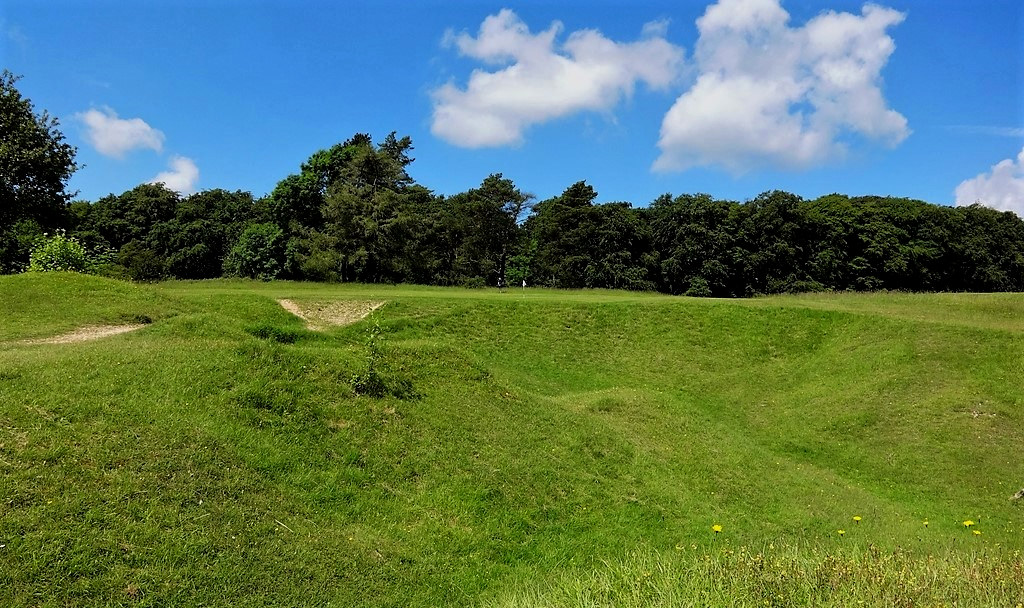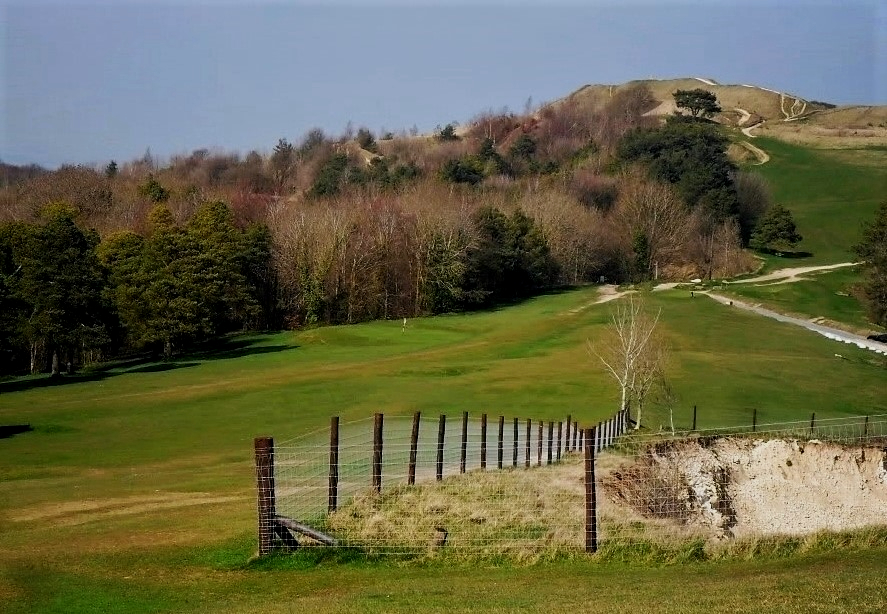

Painswick plays up to and around Painswick Beacon and offers lovely views up and down the Cotswold Escarpment. As the course is on Trust land the membership must adhere to strict maintenance restrictions including little watering that doesn't fall from the sky. In addition, club finances dictate that two green staff can and will get the job done. As such, one cannot expect to find a well-presented course, however, golfers should seek to experience Painswick for the joy of the game rather than for top nick conditions.
Numbers donít really describe Painswick very well, but I offer them in the hope that prospective golfers will be intrigued. From the medal tees, the course is less than three miles long or to be exact, 4831 yards. Seven one-shotters are featured making a total par of 67. During the six hole stretch between #s 5 and 10 there isnít a par 4 to be found. Oh yes, there is only one bunker on the property and it is strictly for practice.
Like it's Cotswold Cousin, Cleeve Hill, Painswick is largely defined by its quarries, humps, hollows and hills. Painswick is more akin to a links than an inland course. Indeed, I donít know of a links which can match this wee Cotswold gem for outrageousness. There are several holes which can best be described as extreme, but the course is generally the better for it. Painswick features many blind shots, the highlights of which come at 5 and 10. These holes play into a 3000 year old bronze age fort which is part of a string of such strongholds. Hole 6, 7 and 11 are within the ancient stone and earth ramparts. The 10th sports the smallest green I have ever seen. No less than ten holes cross over each other. In a word, Painswick is quirky, but if one is looking for some insight as to how the game was played well over a century ago then look no further.
I recall my first game at Painswick some 25 years ago. After crossing the road and setting my bag down near the 1st tee, I then wondered where the fairway was. A quick 360 made it clear that I was meant to play straight up the hill immediately in front of me. It seemed like lunacy to me then and nothing in my twenty or so rounds since has convinced me otherwise. Be that as it may, Painswick's first has the most interesting twist of all the terrible opening holes I know. After a 185 yard Sherpa expedition the golfer finds this first head turner.

Looking back to the tee.

The second used to play from the corner of the huge quarry short and right of the first green, necessitating a daring drive over the corner of said quarry. The tee has been mercifully moved to the rear and left of the 1st green. At 330 yards this is one of the longer two-shotters. While the drive is somewhat interesting, it is the retreating green which provides the challenge. Ever so tempting, the third plays over the edge of a quarry. Superb features such as the track down the right are abundant.

One of my favourites on the course and the last two-shotter we shall encounter until the 11th. #4 is another hole which many golfers will want to attack. One of strongest traits of Painswick are the greensites.




#5 is the pick of some as the favourite par 3 and there can be no doubt that playing up to a bronze age fort is thrilling. I am not so keen on the hole because its either up or lost ball. A large tree was recently removed. A ton of clearance in the quarries should be carried out. Before & after.


The 11th is in the background.

By any standard, the 6th is a superlative hole; 200 yards of delight. It would be fantastic if the fairway section below the green was mowed as an extension of the putting surface.


If you asked me to choose what Painswick's second best strength is, it would have to be the quality of the short holes. There are seven in total, yet one never gets the impression of playing the same sort of tee shot more than once. #7.

Other than the excellent greensites, I am not terribly enamoured with #s 8 and 9, back to back par 5s. If only for the sake of safety, I would rather see the 9th played as a par 4 from the ladies tee. The sunken 8th green.


The 9th green sits at the top end of a quarry; looking back to the tee.

More later.
Ciao